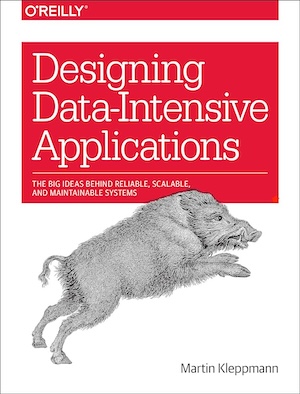
Designing Data-Intensive Applications - by Martin Kleppmann
ISBN-13: 978-1449373320
It is a comprehensive exploration into the foundations of modern data processing systems. The book covers key topics such as data modeling, storage, distribution, scaling, and ensuring reliability in highly complex systems. Kleppmann offers practical insights into the technology choices and implementation strategies for data processing, sharing best practices for building robust, efficient, and scalable applications.
MY NOTES
Understanding the fundamentals of data systems is crucial for designing scalable and reliable applications.
Reliability, scalability, and maintainability are the key considerations for data-intensive applications.
Data models and query languages determine how data can be stored, retrieved, and manipulated.
Distributed systems face unique challenges, including network failures and data consistency issues.
Consistency models, such as eventual consistency and linearizability, affect data accuracy and system performance.
Partitioning data across multiple nodes can improve scalability but complicates query processing and data consistency.
Replication can enhance reliability and availability but requires mechanisms to keep replicas synchronized.
Batch and stream processing are two fundamental approaches for data processing on a large scale.
The choice between SQL and NoSQL databases depends on the specific requirements of the application, including the data model and scalability needs.
Indexing is a powerful tool for optimizing query performance but requires careful consideration of the trade-offs in storage and maintenance costs.
Transaction processing systems and analytics systems often have different requirements, leading to the use of specialized technologies.
Ensuring data integrity and durability is critical, especially in systems that support transactions.
The CAP theorem provides a framework for understanding the trade-offs between consistency, availability, and partition tolerance in distributed systems.
Service-oriented architectures can decouple components, allowing for independent scaling and development.
Caching can dramatically improve performance but introduces complexity in cache invalidation and data freshness.
Message queues and logs provide a mechanism for building reliable, scalable, and decoupled architectures.
Stream processing enables real-time data processing, but requires dealing with time windows, state management, and fault tolerance.
Understanding disk and network IO is essential for optimizing performance and designing efficient data-intensive applications.
Security concerns, including access control and data encryption, are paramount in the design of data-intensive applications.
Privacy considerations, such as GDPR compliance, impact how data can be collected, stored, and processed.
Designing for failure and building fault-tolerant systems are essential skills for architects of data-intensive applications.
Monitoring and observability are crucial for maintaining system health and diagnosing issues in production.
Choosing the right consistency model for a system impacts the user experience and system complexity.
Data schemas and schema evolution are important considerations in systems where data models may change over time.
Microservices and databases: Designing data interactions between microservices requires careful consideration of coupling and transaction boundaries.
Techniques for ensuring data quality and dealing with incorrect, missing, or inconsistent data are essential.
Design patterns for data-intensive applications can provide solutions to common problems but must be applied judiciously.
Event sourcing and Command Query Responsibility Segregation (CQRS) are advanced architectural patterns for managing data in complex systems.
Building a culture of performance testing and optimization is key to sustaining high-performing data-intensive applications.
Emerging technologies, such as machine learning and AI, are increasingly integral to processing and deriving insights from data.